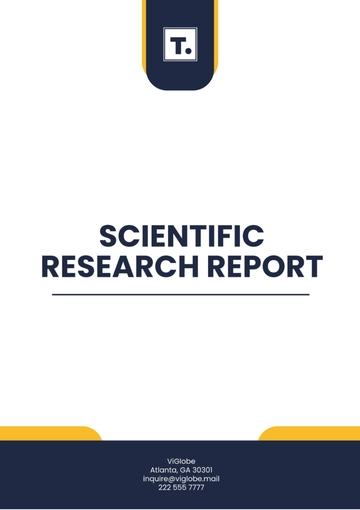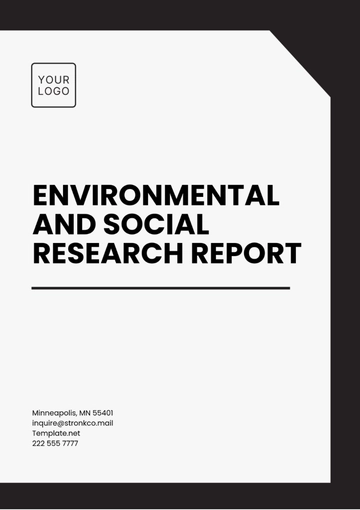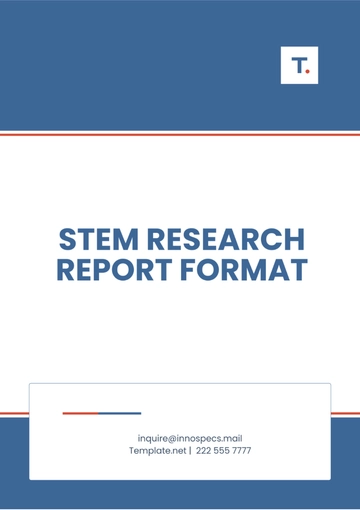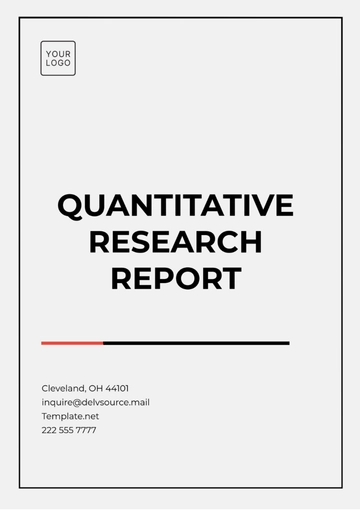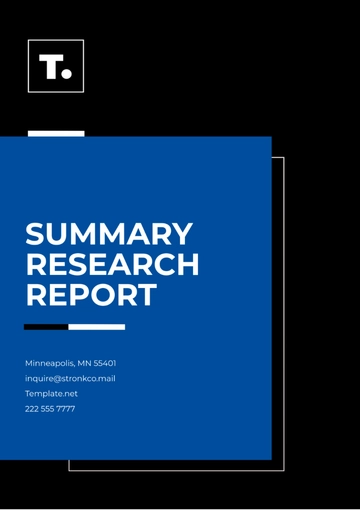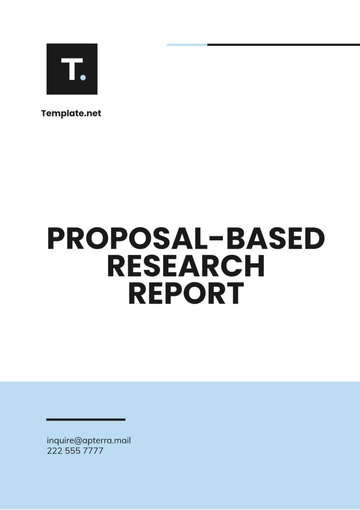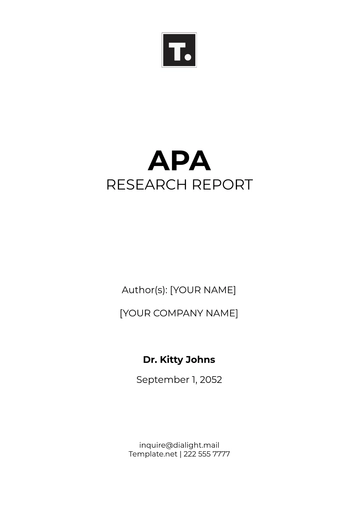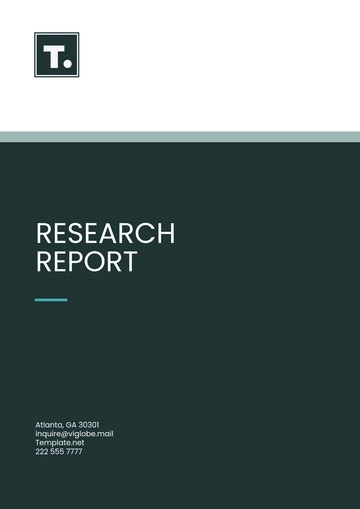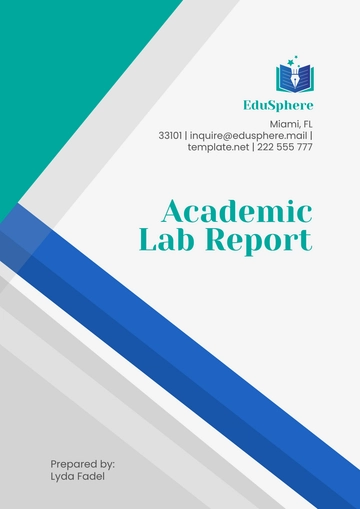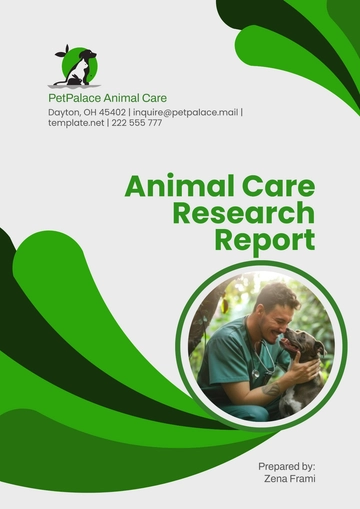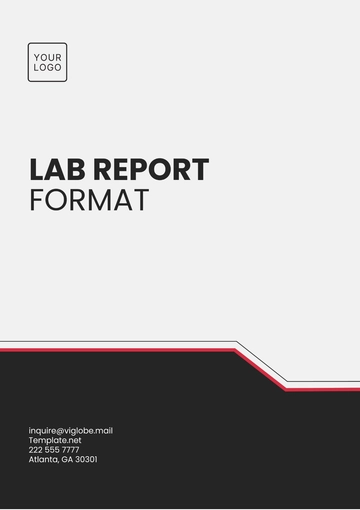Free Marine Biology Lab Report
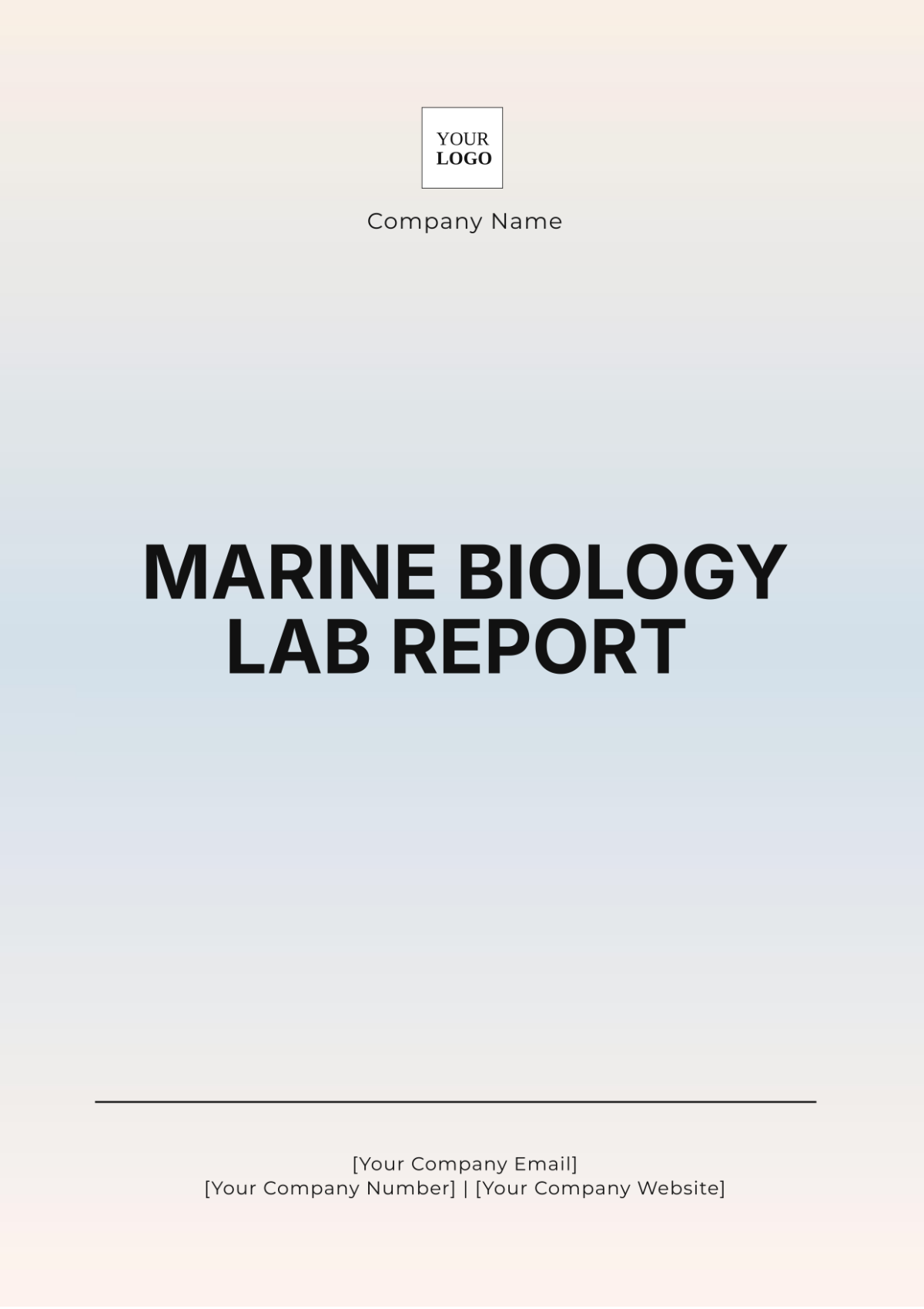
Prepared By: [Your Name]
Date: [Date]
Introduction
Marine biology explores the life forms and ecosystems in the world's oceans and seas. This lab report focuses on investigating the biodiversity in a coastal region, analyzing water quality, and studying the behavioral patterns of different marine species. The aim is to understand the interconnections within marine ecosystems and evaluate human impacts on marine life.
Materials and Methods
Materials
Sampling nets
Water testing kits (pH, salinity, temperature)
Microscopes
Petri dishes
Field guides for species identification
GPS device
Data recording sheets
Methods
To conduct this study, we followed a systematic approach:
Site Selection: Three coastal sites with different ecological characteristics were chosen for sampling.
Sampling: Samples were collected using nets at varying depths and distances from the shore.
Water Quality Testing: Water samples from each site were tested for pH, salinity, and temperature using standard water testing kits.
Species Identification: Collected specimens were examined under microscopes, categorized, and identified using field guides.
Data Recording: All observations and measurements were meticulously recorded on data sheets.
Results
Site Descriptions
Site | Location | Characteristics |
|---|---|---|
Site 1 | North Coast | Rocky intertidal zone, high wave energy |
Site 2 | South Bay | Sandy beach, moderate wave energy |
Site 3 | East Lagoon | Protected lagoon, low wave energy |
Biodiversity Assessments
The following table summarizes the number of species identified at each site:
Site | Fish | Mollusks | Crustaceans | Algae |
|---|---|---|---|---|
Site 1 | 15 | 20 | 10 | 8 |
Site 2 | 18 | 25 | 12 | 10 |
Site 3 | 10 | 15 | 8 | 5 |
Water Quality Parameters
The following parameters were measured for water quality at the three sites:
Parameter | Site 1 | Site 2 | Site 3 |
|---|---|---|---|
pH | 7.8 | 7.9 | 8.1 |
Salinity (ppt) | 35 | 34 | 32 |
Temperature (°C) | 20 | 22 | 24 |
Discussion
The results show substantial biodiversity differences among the three sites. Site 2 had the highest biodiversity, likely due to its moderate wave energy and sandy substrate, which provide an optimal habitat for various species. Site 1, with its rocky intertidal zone, also showed high species diversity, particularly mollusks that thrive in such conditions. Site 3, being a more protected lagoon, had the lowest biodiversity, which might be attributed to low wave energy and limited habitat complexity.
Conclusion
This study underscores the variation in marine biodiversity and water quality across different coastal environments. These differences highlight the importance of considering habitat specificity when developing conservation strategies. Further research should include temporal assessments and expanded sampling to better understand the dynamic nature of marine ecosystems.
References
Smith, J. P., & Johnson, D. W. (2050). Coastal marine ecosystems. Marine Biology Journal, 45(3), 123-145.
Brown, L. R., & Green, M. S. (2059). Water Quality in Marine Environments. Environmental Science, 38(7), 456-472.
National Marine Fisheries Service. (2051). Marine Species Identification Guide. Government Publications.
- 100% Customizable, free editor
- Access 1 Million+ Templates, photo’s & graphics
- Download or share as a template
- Click and replace photos, graphics, text, backgrounds
- Resize, crop, AI write & more
- Access advanced editor
The Marine Biology Lab Report Template, offered by Template.net, is a perfect tool for creating professional reports. This customizable and printable template is downloadable for easy access and editable in our AI Editor Tool to suit your specific needs. Save time and ensure accuracy with this user-friendly format, designed for marine biology research.
You may also like
- Sales Report
- Daily Report
- Project Report
- Business Report
- Weekly Report
- Incident Report
- Annual Report
- Report Layout
- Report Design
- Progress Report
- Marketing Report
- Company Report
- Monthly Report
- Audit Report
- Status Report
- School Report
- Reports Hr
- Management Report
- Project Status Report
- Handover Report
- Health And Safety Report
- Restaurant Report
- Construction Report
- Research Report
- Evaluation Report
- Investigation Report
- Employee Report
- Advertising Report
- Weekly Status Report
- Project Management Report
- Finance Report
- Service Report
- Technical Report
- Meeting Report
- Quarterly Report
- Inspection Report
- Medical Report
- Test Report
- Summary Report
- Inventory Report
- Valuation Report
- Operations Report
- Payroll Report
- Training Report
- Job Report
- Case Report
- Performance Report
- Board Report
- Internal Audit Report
- Student Report
- Monthly Management Report
- Small Business Report
- Accident Report
- Call Center Report
- Activity Report
- IT and Software Report
- Internship Report
- Visit Report
- Product Report
- Book Report
- Property Report
- Recruitment Report
- University Report
- Event Report
- SEO Report
- Conference Report
- Narrative Report
- Nursing Home Report
- Preschool Report
- Call Report
- Customer Report
- Employee Incident Report
- Accomplishment Report
- Social Media Report
- Work From Home Report
- Security Report
- Damage Report
- Quality Report
- Internal Report
- Nurse Report
- Real Estate Report
- Hotel Report
- Equipment Report
- Credit Report
- Field Report
- Non Profit Report
- Maintenance Report
- News Report
- Survey Report
- Executive Report
- Law Firm Report
- Advertising Agency Report
- Interior Design Report
- Travel Agency Report
- Stock Report
- Salon Report
- Bug Report
- Workplace Report
- Action Report
- Investor Report
- Cleaning Services Report
- Consulting Report
- Freelancer Report
- Site Visit Report
- Trip Report
- Classroom Observation Report
- Vehicle Report
- Final Report
- Software Report



